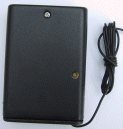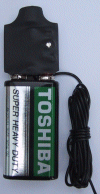FM Transmission is one of the most
interesting branches of electronics. It's an ideal place to start as the circuits are very simple and produce absolutely amazing
results. With as few as 20 components, a circuit can be designed to transmit
an impressive distance and produce an audio quality that sounds almost
indistinguishable from reality.

The transmitters we will be describing in this section are also extremely sensitive. You can hear a pin drop on a
wooden floor at 6 feet. Some of the circuits are stable enough to be carried as a hand-held microphone,
while others have been designed for very long range.
All the transmitters have been tested in a built-up area to coincide with
the conditions you will experience. Obviously, an open-field will achieve
a far greater range.
Many of the specifications presented in other magazines are totally
false, as the circuits are poorly designed. You will see what we mean after you
have studied the projects. You will even be able to improve other designs and
adapt them to your own requirements.
We will also describe test-equipment projects, to test the performance and
range of our FM transmitters. This allows you to detect improvements in your
design without having to travel miles for a range-test.
All the designs we are presenting are available
READY BUILT for those
who do not want to assemble a kit.
Most of the built-up versions use a more-powerful circuit than the design in
the kit, so you cannot compare pricing.
We have sold over 10,000 fully-built devices and more than 40,000 kits. This
has been one of our specialty areas for more than 15 years and we have
developed a full range of models.
Our two most-popular made-up FM transmitters are 900ft and 2400ft:
|

SB-900F |
|

SB-2400F |
|
900ft FM
transmitter |
|
2400ft FM
transmitter |
As an example of our neat designs, here is our WASP project:
It needs a 3v supply (two AAA cells) plus a switch and antenna. The
range is approximately 200-400 yards. You can see the compactness of the board.
This is one of the most important considerations with a circuit containing a high-frequency
oscillator. In this design, the components follow the circuit diagram
and this makes it very easy to follow when you are referencing the circuit
against the project.
Many design-engineers consider it "childish" to layout a PC board to follow the
circuit diagram, but this line-of-thinking makes no sense.
The author has experienced this with a Philips TV set where one component was
on the other side of the set, on another PC board!
It took an hour to track it down.
When components are laid out in a logical way, you can visualize the circuit
and this makes servicing so much easier.
With high frequency circuits, layout is very important. Compactness
makes them much more stable and increases their output. This is due to the
higher "Q" of the circuit called the
"oscillator circuit or "tank circuit."
These are just some of the things you will learn when you read the projects in
this section.
This is not an isolated topic. We will be combining FM transmitting with
microcontrollers to produce "remote data gathering projects."
Continued on Page 2
Our FM TRANSMITTER projects:
19-6-04
|



